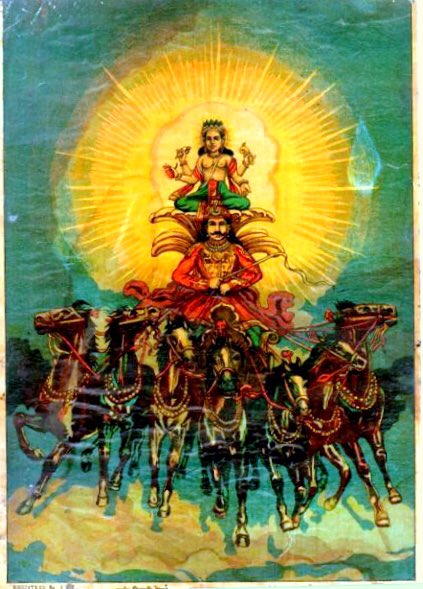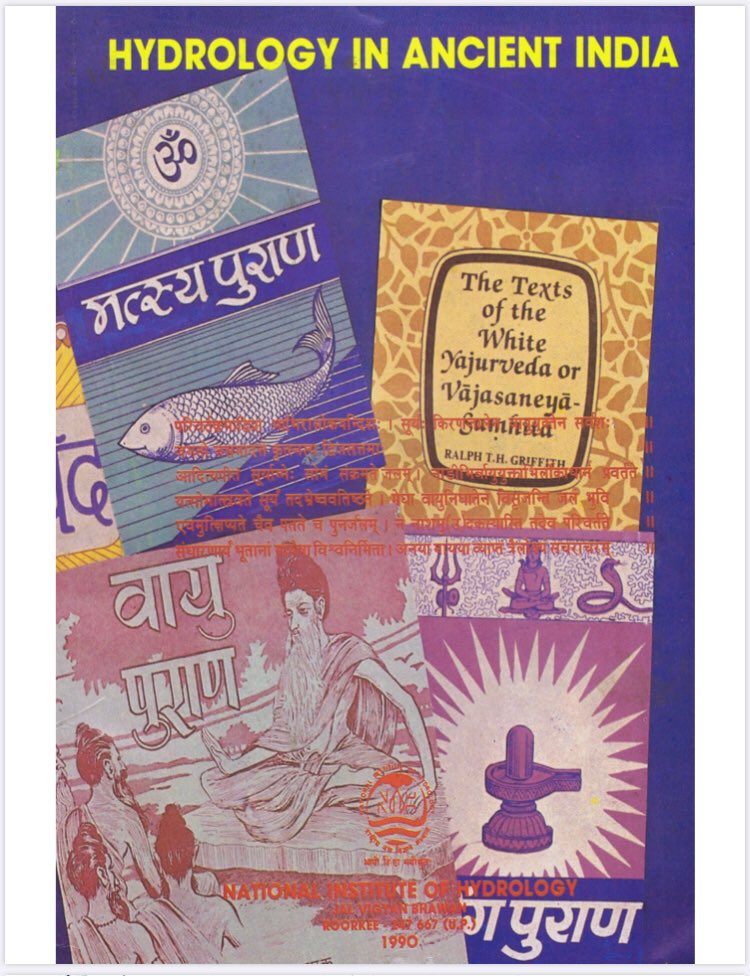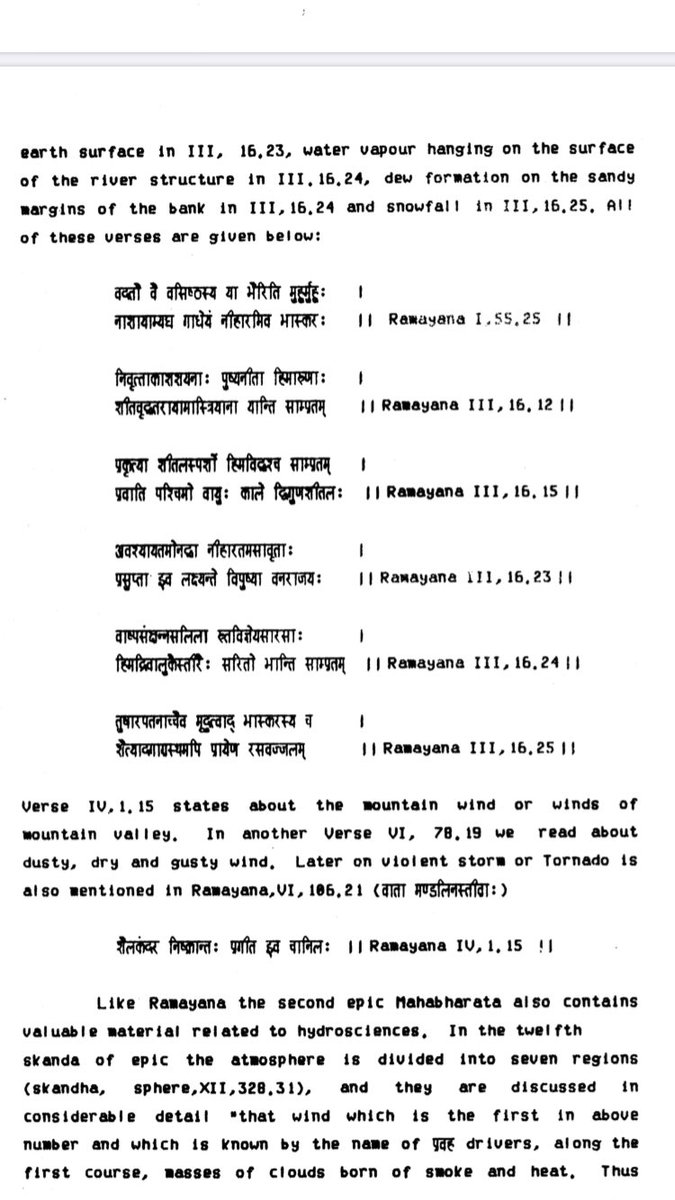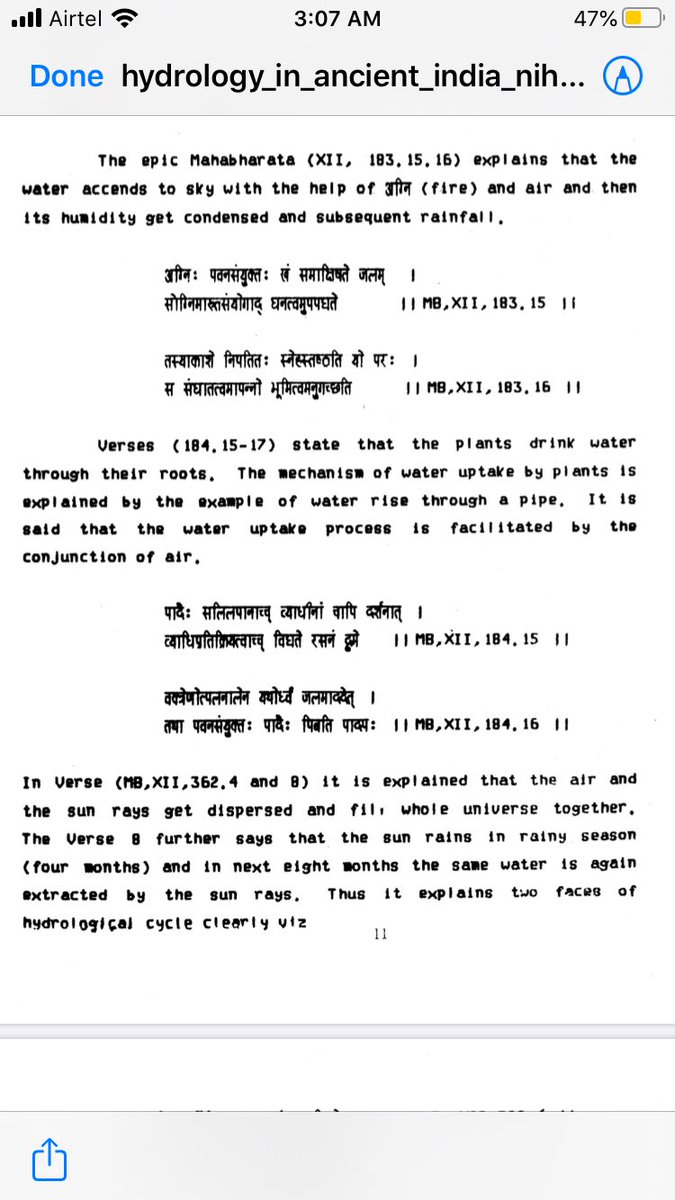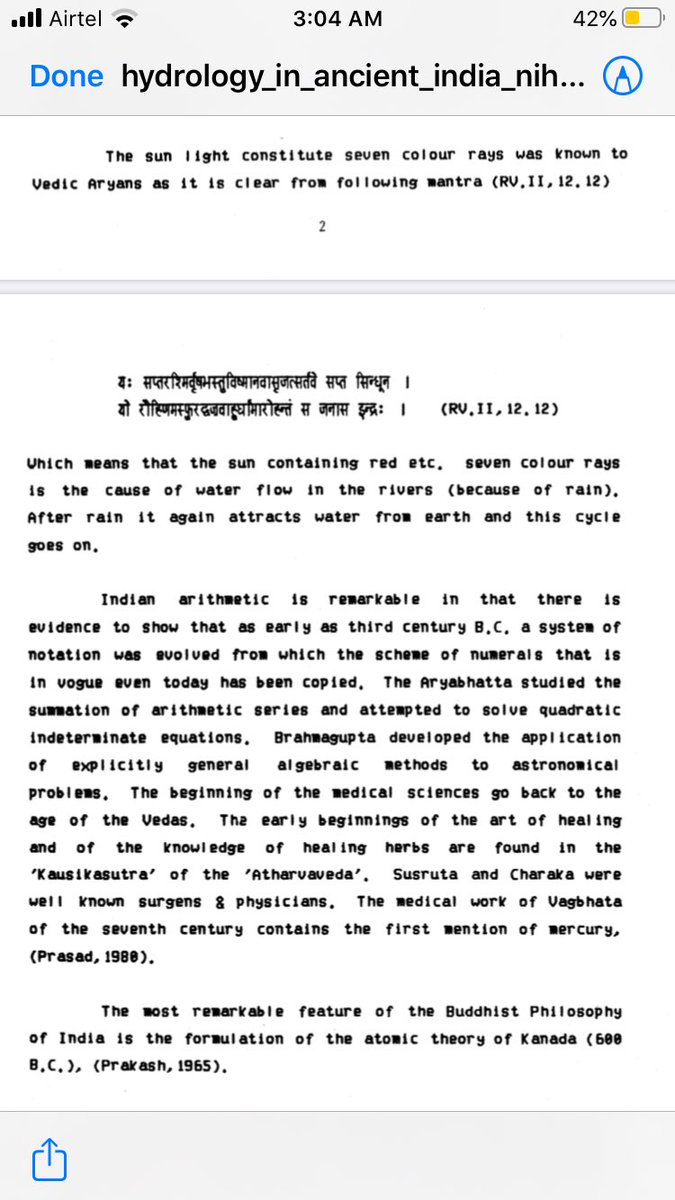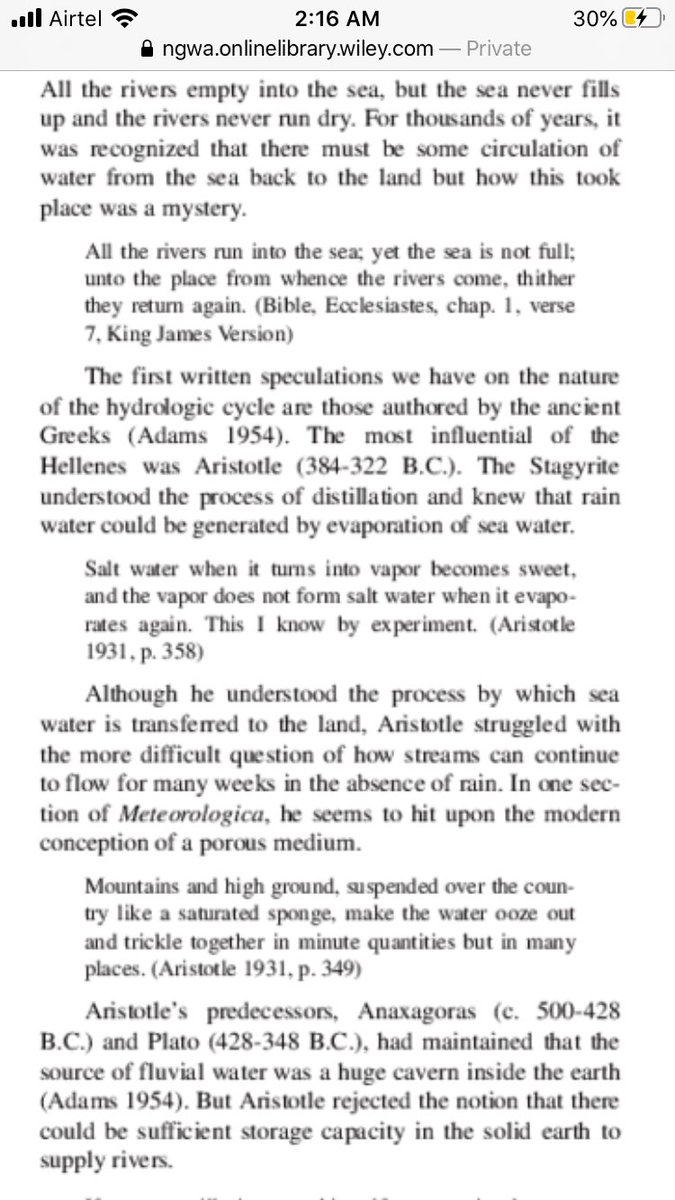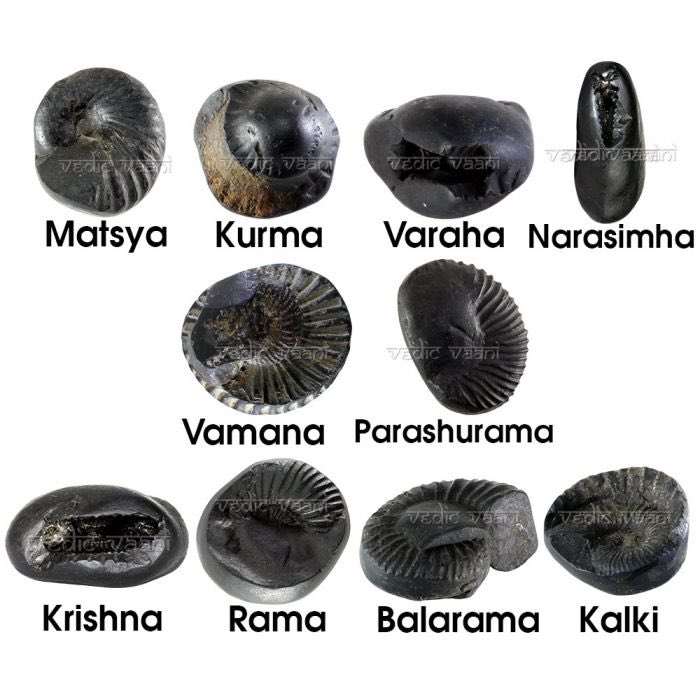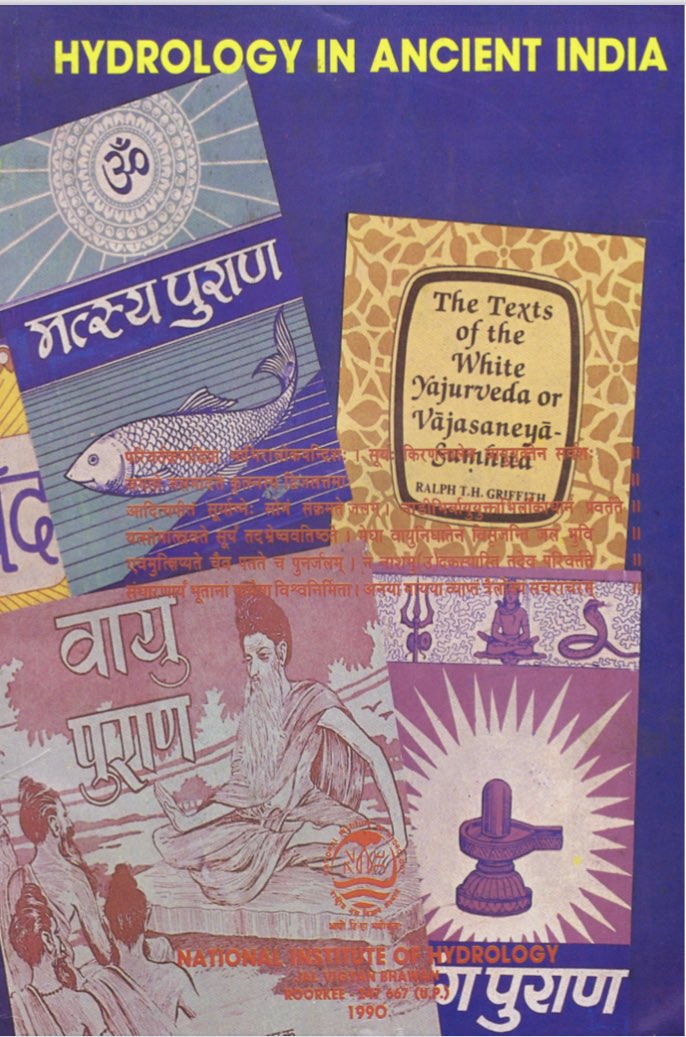I was reading the Adityahrudayam, from the Ramayana (Yuddha kanda, canto 107) and came across this verse that describes the water cycle.
नाशयत्येष वै भूतं तदेव सृजति प्रभुः।
पायत्येष तपत्येष वर्षत्येष गभस्तिभिः॥ 23
“Salutaions to the Sun God, who destroys everything
नाशयत्येष वै भूतं तदेव सृजति प्रभुः।
पायत्येष तपत्येष वर्षत्येष गभस्तिभिः॥ 23
“Salutaions to the Sun God, who destroys everything
that was and creates them all again and whom, by his rays, consumes the waters, heats them up (into water vapor) and brings them down again as rain.”
Naturally I went looking for Vedic references to the hydrological cycle and came across this book which is a veritable gold mine.
Naturally I went looking for Vedic references to the hydrological cycle and came across this book which is a veritable gold mine.
Link: https://www.indiawaterportal.org/sites/indiawaterportal.org/files/hydrology_in_ancient_india_nih_1990.pdf
The Ṛg Veda, Atharva Veda, Linga Purana, Matsya Purana, Mahabharata, Kishkinda Kanda of Ramayana etc all contain scientific explanations and elaborate descriptions of the water cycle. For example, here is what the Vayu purana has to say:
The Ṛg Veda, Atharva Veda, Linga Purana, Matsya Purana, Mahabharata, Kishkinda Kanda of Ramayana etc all contain scientific explanations and elaborate descriptions of the water cycle. For example, here is what the Vayu purana has to say:
“the water evaporated by sun ascends to atmosphere through the capillarity of air, and there gets cooled and condensed. After formation of clouds it rains by the force of air. Thus, water is not lost in all these processes but gets converted from one form to other continuously”
(51. 14-15-16). Similar descriptions of surface and ground water, hot and cold springs, origins of perennial vs seasonal rivers, weather phenomena etc. are all described, and Varahamihira’s Vraht Samhita (550 AD) has three chapters devoted to Hydrometeorology.
It is not news that credit to scientific discovery is highjacked by the west. But despite all the ancient evidence stacked against them, guess who is credited?
Frenchman Bernard Palissy is often credited as the "discoverer" of the modern theory of the water cycle, the “pioneer”of
Frenchman Bernard Palissy is often credited as the "discoverer" of the modern theory of the water cycle, the “pioneer”of
hydrology, published Discours admirables, de la nature des eaux et fontaines, tant naturelles qu'artificielles, des metaux, des sels et salines, des pierres, des terres, du feu et des maux (Paris, 1580).
Prior to him, Aristotle (384-300BC) is known to have speculated the nature
Prior to him, Aristotle (384-300BC) is known to have speculated the nature
of the water cycle but struggled with explaining how rivers flowed in the absence of rainfall. His predecessors, Anaxagoras and Plato both maintained that the source was fluvial water was a giant cavern within the earth, but Aristotle was the first to reject this notion.
Palissy was also one of the first Europeans who maintained that fossils were once living organisms, and contested the prevailing view that they had been produced by the biblical flood/astrological influence. (note: Padma Purana, Skanda Purana, Garuda Purana etc all state that
Salagrama stones, which are Ammonoid/mollusc fossils of the Devonian-Cretaceous period from 400-66 million years ago, are to be worshipped as Lord Vishnu himself, each representing an avatar of Vishnu. it is implied that they have organic origin but not sure if explicitly stated)
Palissy was a Protestant, imprisoned for his beliefs and sentenced to death. He died in a Bastille dungeon during the French Wars of Religion which was a prolonged period of war between the Catholics and Protestants/Calvinists.
Lastly, Newton in 1666 is credited with proving the compostite nature of white light but the Ṛg Veda (II, 12.12), at least 3000 years prior (a conservative estimate) describes sun light containing seven colors of rays.
We know pythogoras theorem wasn't his original work either
We know pythogoras theorem wasn't his original work either
the older link to the book has expired. here’s the new link (from NIH) https://www.indiawaterportal.org/sites/default/files/iwp2/hydrology_in_ancient_india_nih_1990.pdf

 Read on Twitter
Read on Twitter